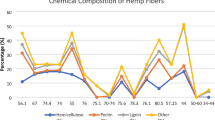Abstract
The determination of chloride concentration in reinforced concrete structures present in marine environment is an important tool in the context of their service life, allowing the development of models capable of estimating the beginning of the bars corrosive process and, at the same time, the reduction of the load bearing capacity of the reinforced concrete structure. In general, the methods for collection of powder concrete samples from real structures are based on the execution of holes with a drill or from the direct grinding of the concrete surface, however, there is the possibility of contamination of samples between the execution of successive continuity of the holes. Thus, another possible method deals with the extraction of concrete cores from the structures and subsequent sectioning in the laboratory. At this point, sectioning procedures not allowing the grinding of layers smaller than 0.5 cm, and still may cause material loss due the rotation speed of the cutting discs. In this way, this work presents an equipment developed, for academic purposes, with the objective to perform the grinding of concrete layers with thickness of 2 mm, at an affordable cost, to obtain powder concrete samples in order to determine chlorides. The results showed that the equipment meets technical and economic aspects successfully and can be used in several world laboratories.







Similar content being viewed by others
References
Cairns J et al (2005) Mechanical properties of corrosion-damaged reinforcement. ACI Mater J 102:256–264
Meira GR et al (2007) Chloride penetration into concrete structures in the marine atmosphere zone: relationship between deposition of chlorides on the wet candle and chlorides accumulated into concrete. Cem Concr Compos 29:667–676
Pape TM, Melchers RE (2012) Performance of 45-year-old corroded prestressed concrete beams. Struct Build 166:547–559
Apostolopoulos CA, Demis S, Papadakis VG (2013) Chloride-induced corrosion of steel reinforcement: mechanical performance and pit depth analysis. Constr Build Mater 38:139–146
Rehman S, Al-Hadhrami LM (2013) Web-based national corrosion cost inventory system for Saudi Arabia. Anticorros Methods Mater 61:77–92
Ueda T, Takewaka K (2007) Performance-based standard specification for maintenance and repair of concrete structures in Japan. Struct Eng Int 4:359–366
Medeiros-Junior RA, Lima MG, Medeiros MHF (2014) Service life of concrete structures considering the effects of temperature and relative humidity on chloride transport. Environ Dev Sustain 17:1103–1119
Mehta PK, Monteiro PJM (2006) Concrete: microstructure, properties and materials. McGraw-Hill, New York
Han SJ et al (2014) Degradation of flexural strength in reinforced concrete members caused by steel corrosion. Constr Build Mater 54:572–583
Apostolopoulos CA (2009) The influence of corrosion and cross-section diameter on the mechanical properties of B500c steel. J Mater Eng Perform 18:190–195
François R, Khan I, Dang VH (2013) Impact of corrosion on mechanical properties of steel embedded in 27-year-old corroded reinforced concrete beams. Mater Struct 46:889–910
Schweitzer PA (2010) Fundamentals of corrosion: mechanisms, causes and preventive methods. CRC Press, New York
Zhu W, François R (2014) Experimental investigation of the relationship between residual cross-section shapes and the ductility of corroded bars. Constr Build Mater 69:335–345
Balestra CET et al (2016) Corrosion degree effect on nominal and effective strengths of reinforcement naturally corroded. J Mater Civ Eng 28:04016103
Castro P, Trocónis De Rincon O, Pazini EJ (2001) Interpretation of chloride profile from concrete exposed to tropical marine environments. Cem Concr Res 31:529–537
Trocónis De Rincón O et al (2004) Chloride profile in two marine structures: meaning and some predictions. Build Environ 39:1065–1070
Medeiros MHF et al (2013) Reinforced concrete in marine environment: effect of wetting and drying cycles, height and positioning in relation to the sea. Constr Build Mater 44:452–457
Torres-Luque M et al (2014) Non-destructive methods for measuring chloride ingress into concrete: sate-of-the-art and future challenges. Constr Build Mater 68:68–81
Recommendation. TC178-TMC (2013) Testing and modeling chloride penetration in concrete: methods for obtaining dust samples by means of grinding concrete in order to determine the chloride concentration profile. Mater Struct 46:337–344
Andrade C, Sagrega JL, Sanjuán MA (2000) Several years study on chloride ion penetration into concrete exposed to Atlantic Ocean Water. In: 2nd International RILEM workshop on testing and modelling the chloride ingress into concrete. Proceedings PRO 19: 2nd International RILEM workshop. Rilem Publications, Paris, pp 121–134
Otieno M, Beushausen H, Alexander M (2016) Chloride-induced corrosion of steel in cracked concrete. Part I: experimental studies under accelerated and natural marine environments. Cem Concr Res 79:373–385
Cheewaket T, Jaturapitakkul C, Chalee W (2010) Long term performance of chloride binding capacity in fly ash concrete in a marine environment. Constr Build Mater 24:1352–1357
Balestra CET (2017) Analysis of chloride profile obtained from real concrete structures present in different marine agressive zones. Doctoral Thesis. Aeronautics Institute of Technology (in Portuguese)
Caldas LM (2000) Historical research about Arvoredo Island and Fernando Lee Foundation. Fernando Lee Foundation, Guarujá (in Portuguese)
Acknowledgements
The authors would like to thank Fernando Lee Foundation for the support during the works at Arvoredos Island.
Author information
Authors and Affiliations
Corresponding author
Rights and permissions
About this article
Cite this article
Balestra, C.E.T., Savaris, G., Schlichting, M.V. et al. Development of laboratory equipment to obtain powdered concrete samples to determine chlorides concentration for durability studies. J Build Rehabil 3, 5 (2018). https://doi.org/10.1007/s41024-018-0034-4
Received:
Accepted:
Published:
DOI: https://doi.org/10.1007/s41024-018-0034-4




